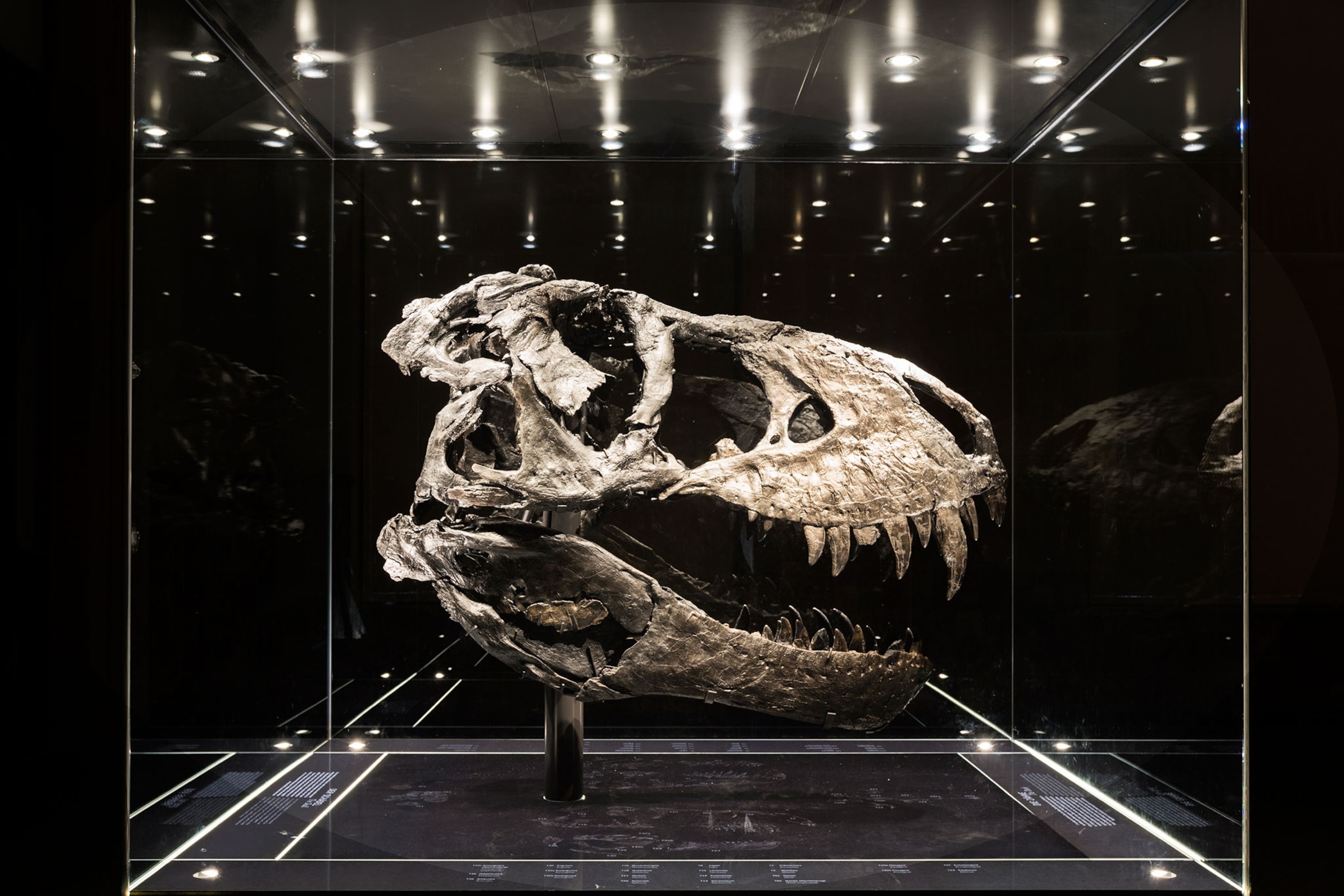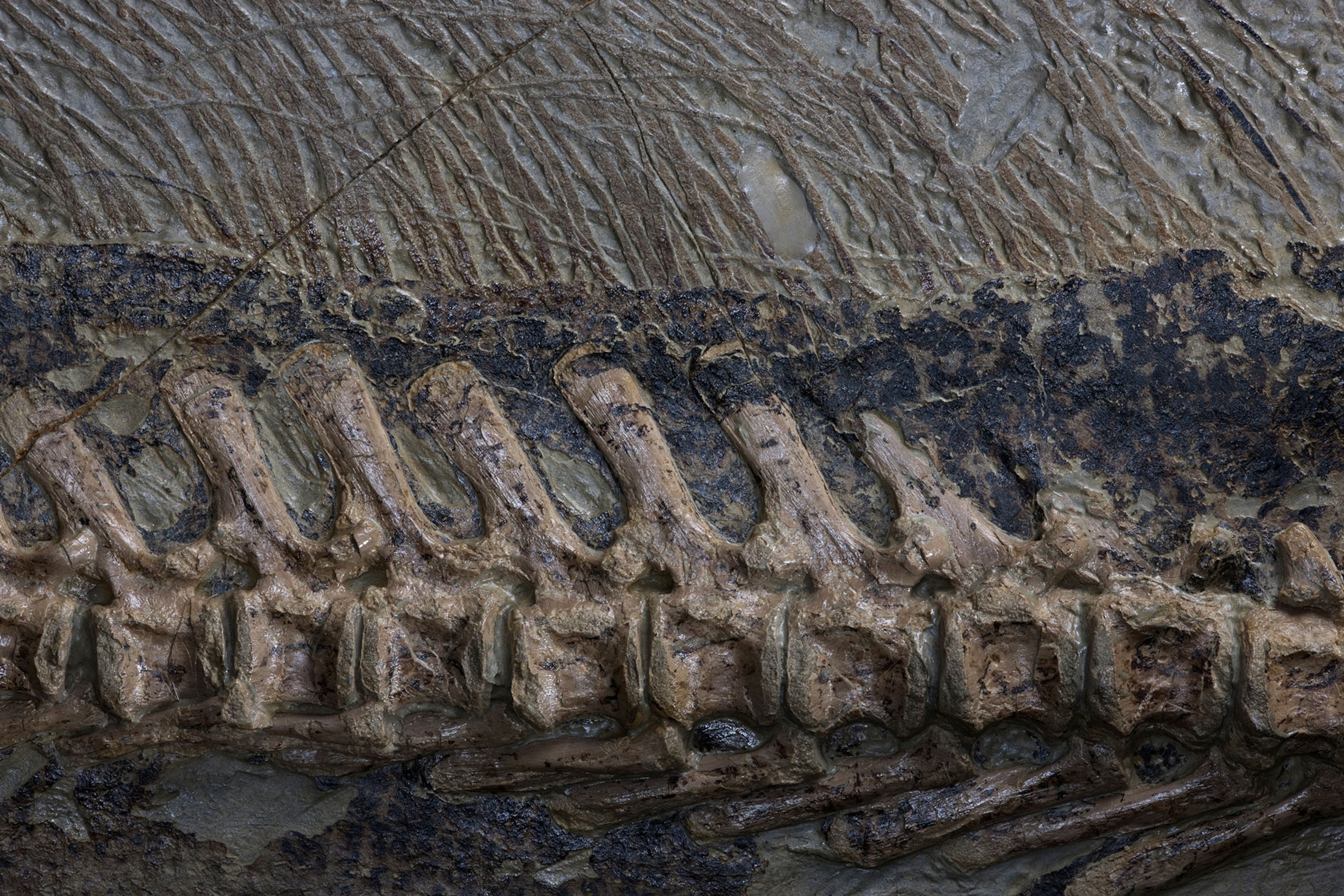Tyrannosaurus rex might have been the “tyrant lizard king,” but before the mighty T. rex stomped across what is now North America, it ancestors weren't exactly living like royalty: They were tiny, gangly, and quick on their feet, adapted to life in the shadows of far larger carnivores.
Now, a fossil found in Utah is helping paleontologists better understand how this region's tyrannosaurs went from ecological paupers to princes. Weighing about 170 pounds and standing less than five feet tall, the newly named species Moros intrepidus is one of the smallest dinosaurs of its kind dating back to the Cretaceous period, the time between 66 million and 145 million years ago.
At 96 million years old, Moros is also the oldest Cretaceous tyrannosaur skeleton found in this region, pushing back that particular record by 15 million years. (Get the best look yet at the face of a tyrannosaur.)
“What Moros does for us is help us understand the who, what, why, where, and when of how tyrannosaurs ascended to top predator roles on the North American continent,” says paleontologist Lindsay Zanno of the North Carolina Museum of Natural Sciences, whose team reports the fossil find today in the journal Communications Biology.
Small wonder, then, that this dinosaur has the genus name Moros: the Greek embodiment of impending doom.
Out on a limb
At the dawn of the Cretaceous, tyrannosaurs were nowhere near the titans we imagine today. Instead, they were small, scrappy predators that hunted alongside much larger meat-eating dinosaurs called allosaurs. By 80 million years ago, North America's allosaurs had faded, and tyrannosaurs had grown about 10 times larger—filling in the allosaurs' apex niche in spectacular fashion.
It remains a mystery, though, how North America's tyrannosaurs got big, since there's a major gap in the continent's mid-Cretaceous fossil record. With the exception of some isolated teeth, paleontologists had been missing skeletal evidence of North American tyrannosaurs from about 150 million years ago to 80 million years ago.
As a result, researchers including Zanno kept searching mid-Cretaceous rock formations. In 2013, Zanno struck gold: While walking through her field site in central Utah's Cedar Mountain Formation, she unexpectedly saw limb bones jutting out of a hillside.
“We've been hunting in this area for 10 years, and these are the only bones of this animal we've ever recovered,” she says. “It takes teams a very, very long time and and an awful lot of luck.”
Dinosaur explorer
The foot bones of Moros are so skinny, it looks ganglier than even the juveniles of later, larger tyrannosaur species. But Moros was no toddler: Close study of the bones' cross sections show that the dinosaur was at least six or seven years old when it died, making it close to adulthood.
The tiny fossil suggests that North America's tyrannosaurs stayed small until at least the time of Moros, which means that tyrannosaurs grew to movie-monster size in just 16 million years—an evolutionary sprint. Perhaps fittingly, the Moros hind limb has some of the running-adapted features seen in later, bigger tyrannosaurs. (Could you have outrun a T. rex? Here's the science.)
“Moros is important in that way; it's the first hint of tyrannosaurs that eventually became the big ones,” says Thomas Carr, a paleontologist at Carthage College and a tyrannosaur expert who wasn't involved with the study.
What's more, Moros most closely resembles tyrannosaurs that lived in Asia in the early Cretaceous. The find suggests that the ancestors of Moros crossed a land bridge from Asia into North America, as part of an exchange between the two continents that's well-documented in other dinosaur groups. To honor its journey, researchers gave Moros the globe-trotting species name of intrepidus.
Now that her team has unveiled Moros, Zanno is eager to describe its swampy home. The same rocks that once held Moros also have yielded the massive allosaur Siats and several plant-eating dinosaurs, including some that are thought to have burrowed. She is also working with researchers to study the area's fossil plant life.
“Hopefully,” she says, “we'll have a whole string of discoveries that are going to reveal this lost Cretaceous ecosystem.”
Related Topics
You May Also Like
Go Further
Animals
- This ‘saber-toothed’ salmon wasn’t quite what we thoughtThis ‘saber-toothed’ salmon wasn’t quite what we thought
- Why this rhino-zebra friendship makes perfect senseWhy this rhino-zebra friendship makes perfect sense
- When did bioluminescence evolve? It’s older than we thought.When did bioluminescence evolve? It’s older than we thought.
- Soy, skim … spider. Are any of these technically milk?Soy, skim … spider. Are any of these technically milk?
- This pristine piece of the Amazon shows nature’s resilienceThis pristine piece of the Amazon shows nature’s resilience
Environment
- This pristine piece of the Amazon shows nature’s resilienceThis pristine piece of the Amazon shows nature’s resilience
- Listen to 30 years of climate change transformed into haunting musicListen to 30 years of climate change transformed into haunting music
- This ancient society tried to stop El Niño—with child sacrificeThis ancient society tried to stop El Niño—with child sacrifice
- U.S. plans to clean its drinking water. What does that mean?U.S. plans to clean its drinking water. What does that mean?
History & Culture
- Meet the original members of the tortured poets departmentMeet the original members of the tortured poets department
- Séances at the White House? Why these first ladies turned to the occultSéances at the White House? Why these first ladies turned to the occult
- Gambling is everywhere now. When is that a problem?Gambling is everywhere now. When is that a problem?
- Beauty is pain—at least it was in 17th-century SpainBeauty is pain—at least it was in 17th-century Spain
Science
- Here's how astronomers found one of the rarest phenomenons in spaceHere's how astronomers found one of the rarest phenomenons in space
- Not an extrovert or introvert? There’s a word for that.Not an extrovert or introvert? There’s a word for that.
- NASA has a plan to clean up space junk—but is going green enough?NASA has a plan to clean up space junk—but is going green enough?
- Soy, skim … spider. Are any of these technically milk?Soy, skim … spider. Are any of these technically milk?
Travel
- Could Mexico's Chepe Express be the ultimate slow rail adventure?Could Mexico's Chepe Express be the ultimate slow rail adventure?
- What it's like to hike the Camino del Mayab in MexicoWhat it's like to hike the Camino del Mayab in Mexico




























